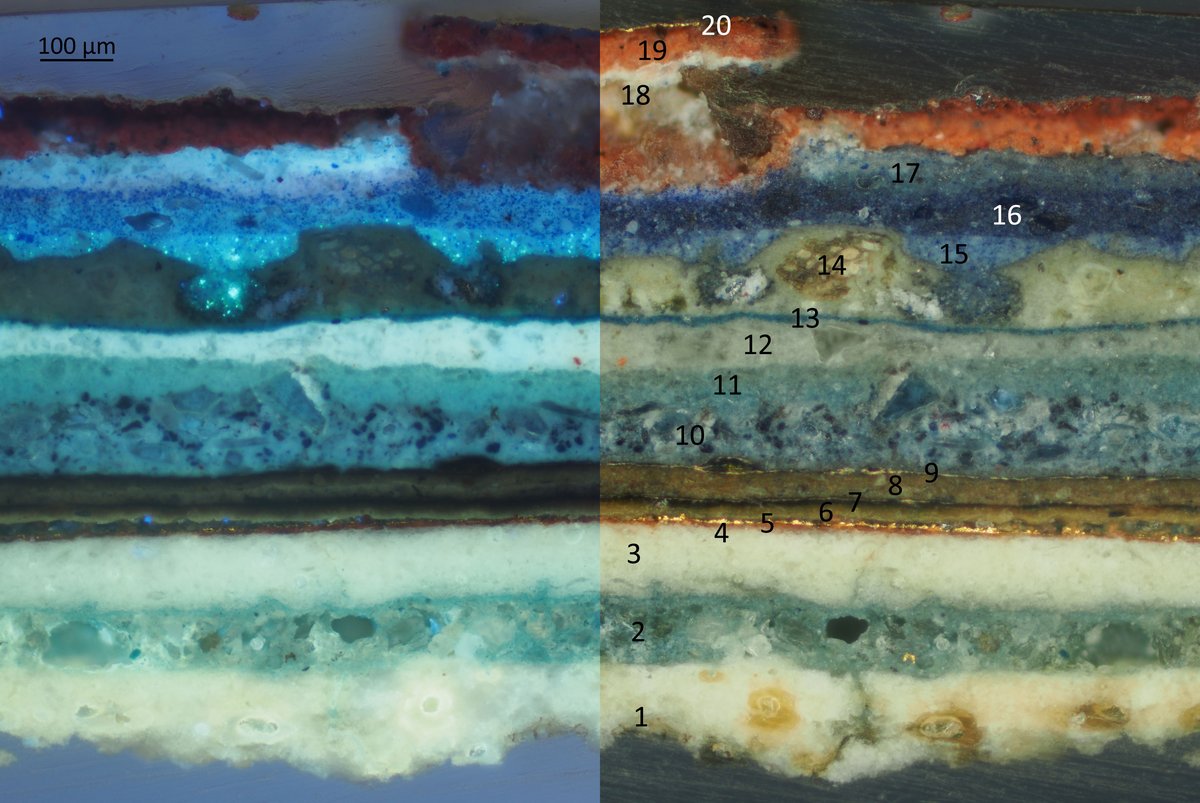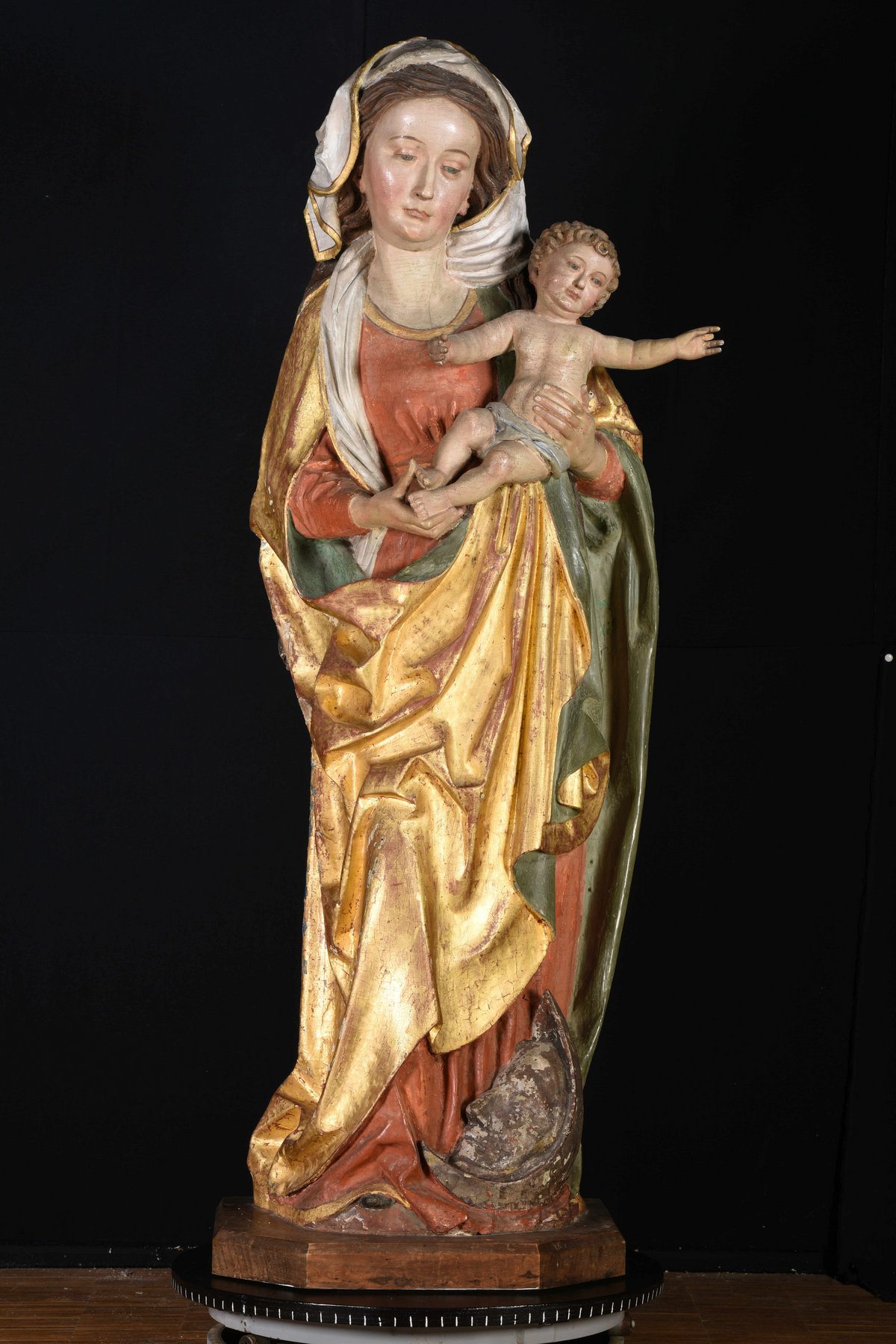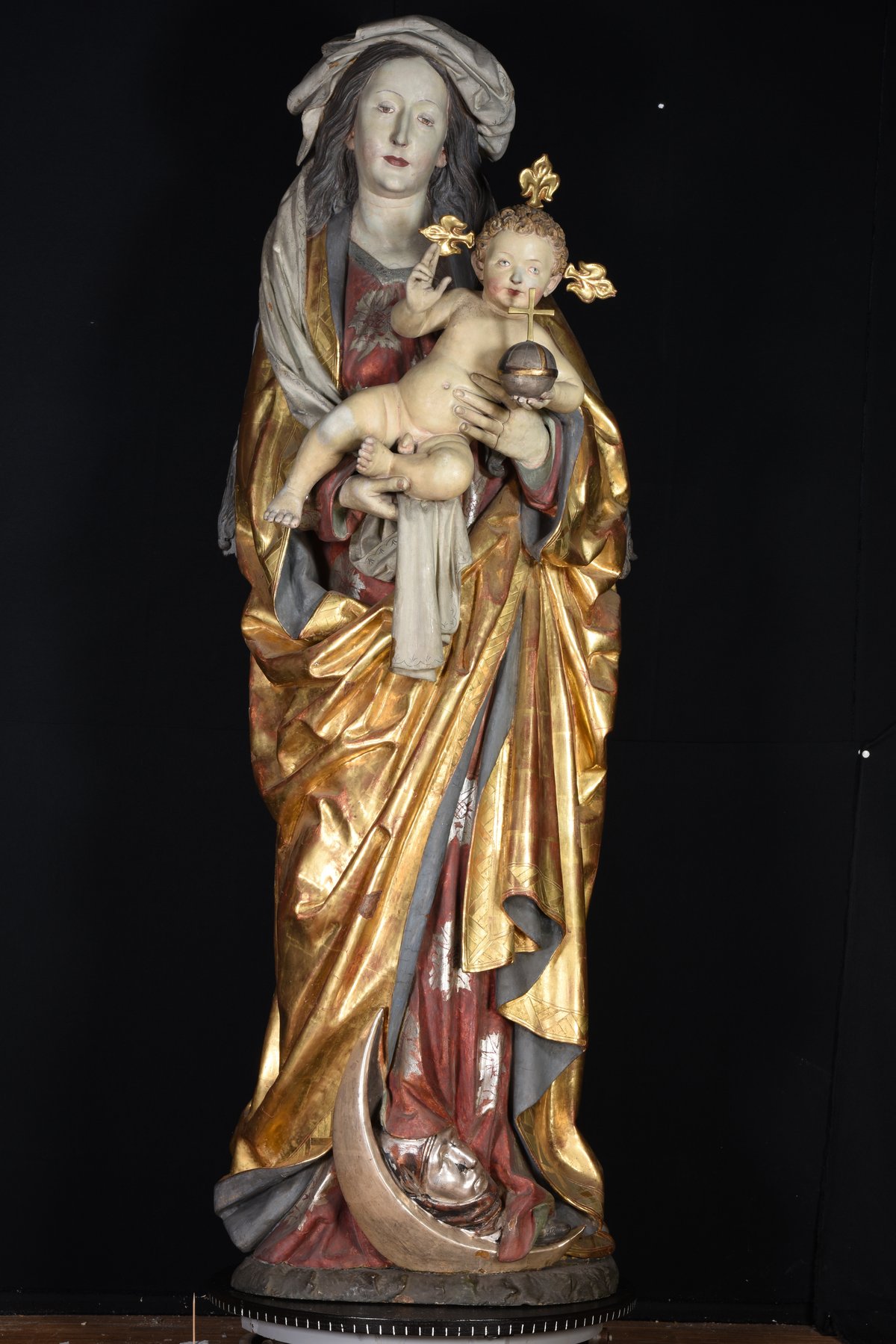
Project "Madonnas"
-

Ochsenhausen Madonna, Niklaus Weckmann Workshop, full view, front side, previous condition, VIS incident light, 14.08.2019, © State Office for the Preservation of Historical Monuments (LAD), Esslingen. -

Weißenau Madonna, Michel Erhardt Workshop, full view, front side, previous condition, VIS incident light, 10.07.2019, © State Office for the Preservation of Historical Monuments (LAD), Esslingen. -
Weißenau Madonna on the Altar of Our Lady, Michel Erhardt Workshop, historical photograph, pre-1925, © State Office for the Preservation of Historical Monuments (LAD), Esslingen. -

Weißenau Madonna, Michel Erhardt Workshop, three-dimensional X-ray image (cross-section) by means of computer tomography (conducted by the Radiologische Gemeinschaftspraxis (Radiology Centre) in Esslingen). The right hand inserted in the sleeve (marked red) can be clearly seen, © Julia Sachse.
During her internship semester at the Stuttgart State Academy of Art and Design, Lisa Braun, member of the Graduate Research Programme “Changing Frames”, had the opportunity to work together with two painting and sculpture conservation students in the framework of Internship Project I. In cooperation with the Department for the Preservation of Art Monuments and Historical Buildings of the Baden-Württemberg State Office for the Preservation of Historical Monuments (under the supervision of Jochen Ansel and Dr Dörthe Jakobs), bachelor’s student Julia Sachse and master’s student Anna Egeler worked on two late-Gothic Madonna sculptures. These sculptures are representative of the two most successful woodcarving workshops in Ulm around 1500: The Niklaus Weckmann Workshop and the Michel Erhardt Workshop. Astounding differences between the two sculptures already became apparent at first glance, above all in relation to the state of their preservation today and the way they were made. The three young researchers in conservation and art history worked hand in hand on the analysis and study of the Madonna sculptures. They combined art technological findings with provenance research and style critique and in this way were able to reconstruct parts of the Madonnas’ unsettled lives as well as draw conclusions about the works commissioned, intentions and working methods of the artists in the Late Middle Ages.
Interdisciplinary cooperation broadened the horizons of both disciplines and generated results which allowed a holistic view on and classification of the Madonna sculptures. It emerged, for example, that repairs to the wood of one of the Madonnas, initially judged to be of a later date, were in fact traces of the Weckmann Workshop’s original work.
